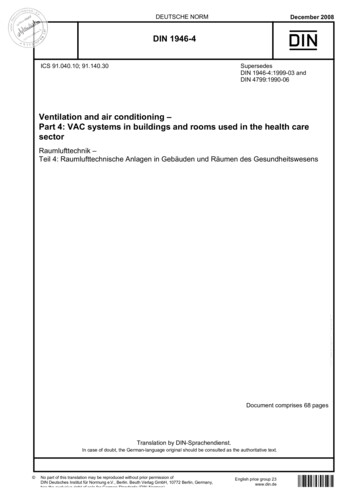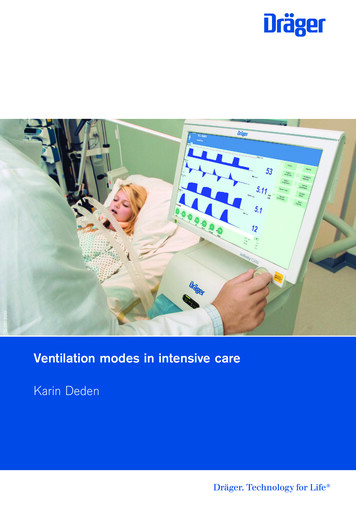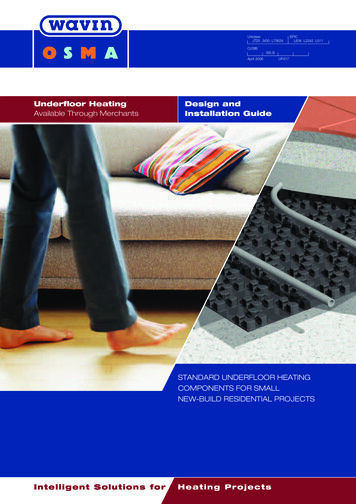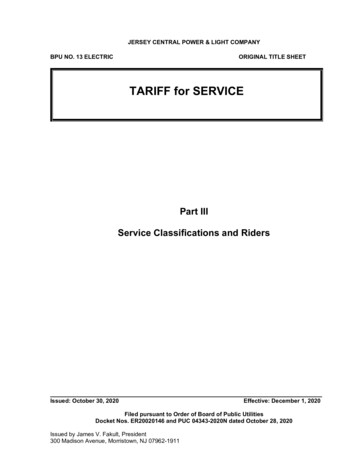
Transcription
The 15th International Conference on Virtual Learning ICVL 2020385Heating and Ventilation System with Arduino and LabVIEWMihai BogdanComputer Science and Electrical Engineering Department,Lucian Blaga University of Sibiu, 550025, Romania,E-Mail: mihai.bogdan[at]ulbsibiu.roAbstractThis system aims to control the heating and ventilation system of the home, using the LabVIEWgraphical programming environment. The system consists of a temperature sensor, 2 control circuits,and the Arduino mega 2560 platform, which will control the entire system. The first control circuit isused to start a fan for cooling the house, and the second control circuit is used to operate a relay of theboiler for heating the house. This system works like a thermostat, so it will keep the house at the set(desired) temperature.The temperature sensor measures the temperature inside the house and if thetemperature is lower than the set one, Arduino activates the boiler relay to start heating the house.After reaching the set temperature, the heating of the house is stopped. The same thing happens if thetemperature of the room is higher than the set temperature, Arduino controls the fan to cool the room.Keywords: LM 35 DZ, Cooling Fan, Arduino, LabVIEW, LINX.1 IntroductionHome automation ensures increased comfort through various functions offered by automation,such as: measuring and improving the air quality inside the home, adjusting the lighting accordingto the light level, or automating the heating system so that the temperature is always right for theuser. A thermostat is a component of a control system which senses the temperature of a system sothat the system's temperature is maintained near a desired set point. The thermostat does this byswitching heating or cooling devices on or off or regulating the flow of a heat transfer fluid asneeded, to maintain the correct temperature. A thermostat can often be the main control unit for aheating or cooling system, in applications ranging from ambient air control to automotive coolantcontrol. Thermostats are used in any device or system that heats or cools to a setpoint temperature,examples include building heating, central heating, air conditioners, as well as kitchen ki/ Thermostat).The system for controlling the heating and ventilation of a room, contains a temperature sensorLM 35 DZ, a circuit for controlling the boiler relay and respectively a circuit for controlling thefan.The LM35 series is an integrated circuit for the temperature measurement. Corresponding toeach degree Celsius ( C) it gives 10 mV as output. It can sense temperature in the range of 55 C– 150 C.The temperature sensor is connected to the A0analog input of the Arduino mega 2560. Thecontrol circuit of the ventilation system is connected to the 40-digital pin, of the Arduino mega2560, and the control circuit of the boiler relay is connected to the 42digital pin number. To see ifthe boiler relay is activated, we mounted an LED to indicate this (Figure 1).
386University of Bucharest, Faculty of Matematics and InformaticsFigure 1.System Hardware Wiring DiagramThe resistance for limiting the current through the LED, we calculated it with the relation:2 System Software DesignTo create the interface between LabVIEW and Arduino, you need the following software: LabVIEW; NI VISA; VIPM; LINXNI VISA - National Instruments Virtual Instrument Software Architecture is an API thatprovides a programming interface to control Ethernet/LXI, GPIB, serial, USB, PXI, and VXIinstruments in National Instruments application development environments like LabVIEW, 06/ni-visa-overview.html).
The 15th International Conference on Virtual Learning ICVL 2020387VIPM - VI Package Manager reduces project costs by helping you implement a code reuseprocess in your organization. VIPM makes it easy to manage and share reusable VIs acrossmultiple projects, computers, and teams of developers 9002.LINX - LabVIEW for X (LINX) is designed to replace LabVIEW Interfaces for Arduino and toprovide a LabVIEW generic protocol for the interface with any programmable device, butspecifically targeting Microcontrollers and SoCs (System on a Chip). LINX will provide a highlevel of programming that allows users to communicate with several devices, including Arduino(https://www.labviewmakerhub.com/).After installing all the necessary software, the LabVIEW program will open, in which I willmake virtual instruments necessary for programming the Arduino MEGA 2560 boards, then selectTools Makerhub LINX LINX Firmware wizard.Figure 2.LINX ConfigurationRepresented in Figure 3 is the Front Panel of the VI. It contains the following controls andindicators:- a control (Serial Port) for setting the serial port to which Arduino is connected;- a boolean control (Stop Program) to stop running the virtual instrument;- a numerical control (LM35 Threshold) for setting the voltage level, from which the relay ofthe boiler for heating the house or the fan for cooling the house is operated;- a numerical indicator (LM35 Output Voltage) for displaying voltage values at the output ofthe LM35 temperature sensor;-two Boolean indicators (Boiler Relay and DC Fan) to indicate the status of the boiler relay andDC fan.
388University of Bucharest, Faculty of Matematics and InformaticsFigure 3. The Front Panel of the VIThe Block Diagram of VI contains the controls and indicators terminals of the Front Panel, thevarious nodes, constants, and the wires. The nodes in LabVIEW are different functions, subVIs,and programming structures (Bogdan, 2018).In the block diagram, the following functions and programming structures were used: The Open Serial Function: this function opens a serial connection with the Arduino platform.Each different program starts with the Open function.
The 15th International Conference on Virtual Learning ICVL 2020389Figure 6. The Block Diagram of the VI The TMP35 Function: Read temperature from LM35 sensor. The Digital Write N Chan Function: Write the digital values (high or low) to the specifieddigital output channel. The Close Function controls the end of the program. This function closes the connection tothe remote LINX device and free any local I/O resources. We must finish each differentprogram with Close function; The Build Array Function - this function adds the two boolean values to the
University of Bucharest, Faculty of Matematics and Informatics390input, in a two-element array, which will be applied to the input of the Digital Write N ChanFunction which will write these values to pins 40 and 42. The While Loop structure: that will continuously execute the functions inside it untilthe conditions for termination are reached.3 ConclusionThe two major heating and ventilation functions for a home, offer thermal comfort andacceptable indoor air quality at reasonable installation, operation, and maintenance costs.I opted to write the application code in LabVIEW Graphical Programming and not in a classictext-based programming language.The advantages of programming using the LabVIEW graphical programming language overthe classic text-based programming language are: It offers a multitude of libraries and virtual tools specific to programming embeddedsystems; The graphical interface of the LabVIEW program is very friendly with the programmer; Higher productivity of graphic language compared to classical languages of programming; The LabVIEW language features interactive debugging tools.ReferencesBogdan, M., (2019): „Monitoring and Alarming System for a Gas Central Heating Boiler”, Proceedings of the14th International Conference on Virtual Learning (ICVL 2019), ISSN: 1844-8933 - ISI Proceedings, p.325-331, OCTOBER 25-26, 2019Bogdan M., (2018): „Gas Detector Using Arduino and LabVIEW”, Proceedings of the 13th InternationalConference on Virtual Learning ICVL 2018, ISSN: 1844-8933, p. 315-318, October 26-27, 2018https://playground.arduino.cc/Main/MQGas Sensorshttps://en.wikipedia.org/wiki/ ps://www.labviewmakerhub.com/
LINX - LabVIEW for X (LINX) is designed to replace LabVIEW Interfaces for Arduino and to provide a LabVIEW generic protocol for the interface with any programmable device, but specifically targeting Microcontrollers and SoCs (System on a Chip). LINX will provide a high level of programming that allows users to communicate with several devices .











